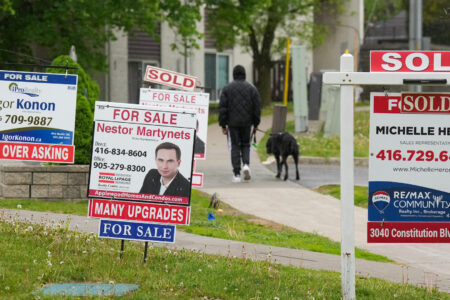
Left for dead after last May’s election, which saw them relegated to third-party status for the first time since Confederation, the federal Liberals pulled themselves together to stage a remarkable policy convention in Ottawa in mid-January. More than 3,400 Liberals from across Canada paid their own travel and accommodation costs, and got themselves to Ottawa in the middle of a snowstorm.
Far from abandoning the Liberal Party, they were rallying to its side. They didn’t look like a third party, and they didn’t act like one. They acted like a party on the move. The new Ottawa Congress Centre was bursting with energy. In the breakouts and plenary sessions, there was no shortage of ideas. There was a closely run race for the party presidency, and a rousing closing keynote by Interim Leader Bob Rae, which we run here as a Verbatim to lead off our cover thematic on the Liberal revival.
To begin, we hear an articulate voice from the next generation, Zach Paikin, a McGill University student who ran for national policy chair of the Liberal Party. He writes that the Liberal Party “must develop a vision for increasing government revenue and reducing expenditures so that our country obtains the fiscal capacity to weather the storm.”
Brian Bohunicky, who was Michael Ignatieff’s policy director, sees the successful January convention as the first step in a steep climb. He writes that third-party status actually offers the Liberals the opportunity to play the long game “with courage and creativity.”
Andrew Balfour writes that while the Liberal Party is not a movement party like the Conservative Party, it can learn a lot from the Conservatives about fund-raising and organization. “The Liberal Party is at its best when it is defining the centre of Canadian politics,” he concludes, “and at its worst when chasing the centre.”
Former MP Martha Hall Findlay writes that the Liberals need to move neither left, nor right, but forward. And she offers a menu of issues, from trade and globalization to Aboriginal Canadians and immigration, where they can show policy leadership.
Contributing Writers Tom Axworthy and Robin Sears see the prospects of a Liberal revival through two very different prisms. A former principal secretary to Pierre Trudeau, Axworthy sees the convention’s tribute to Allan MacEachen, the party’s grand old man at 90, as a kind of Old-Timers’ Day at Yankee Stadium. Today’s Liberal Party, he writes, could learn a lot from MacEachen. Sears, a former national director of the NDP, looks at what challenges would confront New Democrats given a Liberal comeback.
We conclude the thematic with three provocative and incisive pieces from senior Liberal strategists Steven MacKinnon, John Duffy and David Herle.
MacKinnon, a former national director of the Liberal Party, provides a view of last year’s campaign from the ground, where he was a candidate in Gatineau, Quebec. A woman at the door said to him: “We’re having an election so you can bring in a ‘family pack.’ Is that it?” For MacKinnon, that pretty much summed up the futility of the campaign. He writes, the Liberals failed to offer a compelling vision, and suffered predictable results.
For John Duffy, the place where the Liberals find themselves — a distant third — offers an opportunity. Facing a Tory majority, he writes that “the powerless Liberals are finally learning to oppose. They will need to, or face extinction.”
David Herle writes that it’s time for the Liberals to go big or go home. As a pollster, he knows there comes a point where the numbers talk, and they spoke volumes last May in Quebec and Ontario, the two provinces that for generations had delivered Liberal majorities. Not to mention the West, where the Liberals hold only 4 out of 92 seats. He sees the road back as running through Canada’s cities.
In his column from Calgary, Todd Hirsch says the Liberals shouldn’t expect a revival anytime soon in the West. There is no reason to believe Liberal fortunes in the West will improve in the new 338-seat House, with 6 new seats each for British Columbia and Alberta.
In our Dossier, we have policy agendas from Brian Topp and Thomas Mulcair, widely regarded as the two frontrunners in the NDP leadership race. Topp has adapted a presentation on fiscal policy he made to the Economic Club in Toronto. Mulcair, a former environment minister in Quebec, flays Stephen Harper and the Conservatives for their record on the environment, particularly “the tar sands,” which he says represents “dirty oil.”
We have two offerings in our Innovation Nation series. From the Canada Foundation for Innovation, Gilles Patry and David Moorman present an agenda for creating private sector innovation centres. From the Macdonald-Laurier Institute, Brian Lee Crowley and Kristina Lybecker present the main points of their major policy paper on intellectual property and patents in pharmaceuticals, a major issue in Canada’s free trade talks with the European Union.
In another kind of leadership race, presidential historian Gil Troy checks in on the race for the Republican nomination. He writes that the Republicans are still searching and yearning for the next Ronald Reagan.
Photo: Shuttestock






